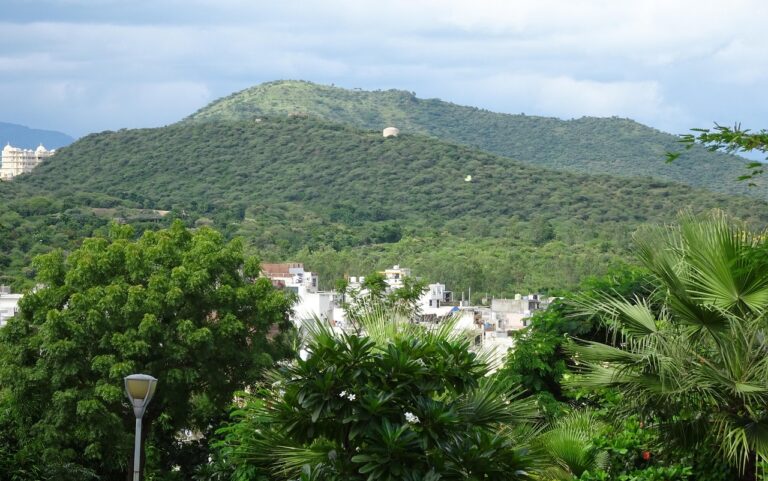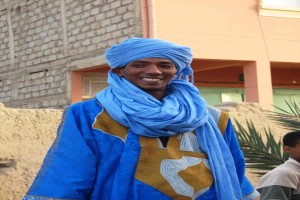
Tuareg. By Hanay .
Food habits of Indigenous People -5
The Tuaregs, who call themselves the Kel Tamasheq, are the nomadic people and the inhabitants of the central Sahara and its borders. They came from the east and from the Sahara and are considered to be the first ethnic settlement group to have visited the Gargando region. Algeria , Libya , Mali , Burkina Faso , Niger and Chad are all countries with a Tuareg population. This population is divided into eight regional groups. The two northernmost, which number an estimated 10,000, live in the pure desert and live on camel and goat farming, oasis farming and trade, while the far more numerous groups in the Sahel in the south also keep zebu cattle and sheep.
The Tuaregs speak Tamasheq, which is a Berber language , as their mother tongue. In this language they do not call themselves Tuaregs, but Kel Tamasheq (the people who speak Tamasheq).
They are divided into three distinct socio-political entities or tribes, namely: (1) the Kel Antessar tribe, roaming in the north, in the area near the Lake Faguibine System; (2) the Tenguereguif tribe, roaming between Timbuktu and Goundam and in the river basin during the dry season; and (3) the Kel Hausa or Cheriffen, who are exclusively marabouts and whose families are related to the first two groups.

The Kel Tamasheq community’s food system is mainly based on pastoralism: milk and meat production and their by-products such as curd, butter and cheese, as well as dry-cured spicy salted meat (smoked meat). These primary food groups, which constitute the Kel Tamasheq’s core diet, are passed on through generations. The Kel Tamasheq community self-identifies through these food items and their unique local processing methods. Livestock herding is part of a pastoralist production system, characterised by mobility, namely transhumance and nomadism.The species bred are sheep, goats, cattle, donkeys, camels and poultry. Donkeys are bred to transport people, building materials and firewood. The community does not use their meat or milk for consumption. The Kel Tamasheq food system includes other subsistence activities such as cereal and vegetable farming, as well as wild food gathering. Their diet does not change following their departure from the village, but rather depending on the areas they pass through.
Also read: Food habits of Indigenous People: Food that the Melanesians eat in Solomon Islands
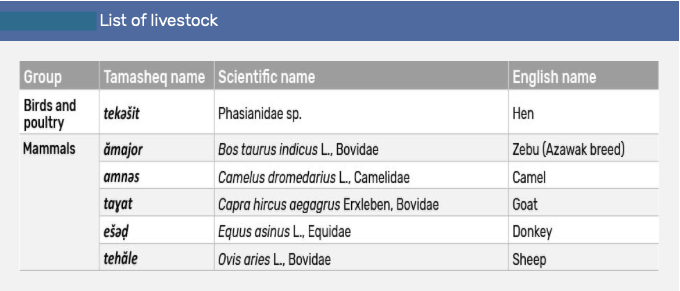
During transhumance, herders drink milk and eat wild edibles and ground cereal that they store in goatskins. Transhumance can last six months. Family leaders decide when it starts based on information obtained beforehand from observers who have gone scouting to check water and pasture conditions. Men own their livestock and manage the herd, the arrival and departure of animals, milk deliveries, food and veterinary medication purchases, etc. In contrast, women own the milk and manage the income generated from its sale. Women are also responsible for processing milk and meat as well as gathered wild edibles. Depending on production levels, they decide how much is for family consumption, for processing, for selling, for stocking, and for donating to the poor or to parents in the larger towns. Women also look after small animals and poultry. Children play their role in the community by looking after young animals, such as calves, goat kids and lambs, and by going to school. The community note obstacles to food security as a result of drought, loss of livestock, social and land insecurity, diseases, and low incomes that limit their access to food produce. Nevertheless, at the same time, they show their resilience and adaptation to the harsh climate by maintaining and respecting traditions related to their local food system, whilst being open to innovations.
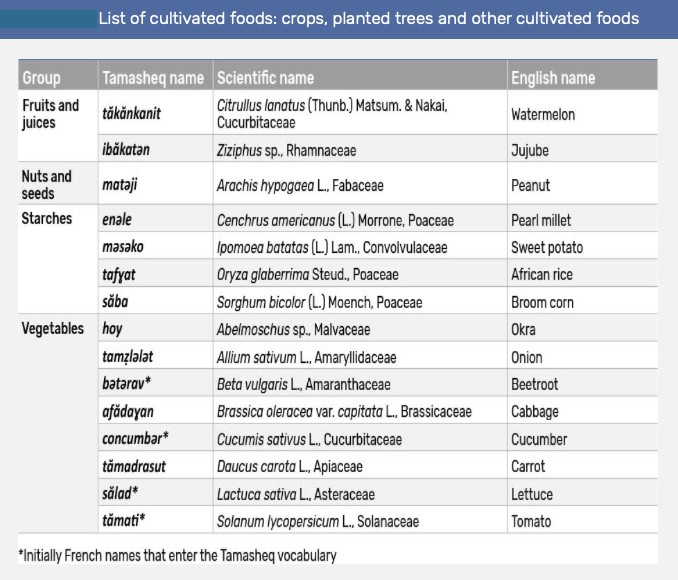
Cultivation activities focus on three crops: pearl millet, broom corn and rice, all of which are rain-fed and do not require irrigation. Production methods are rudimentary. The women process millet into cream. The process consists of grinding the grains down to flour, which is then sprayed with a little water in a container to form a paste. This paste is then regularly turned with their fingers using regular coordinated movements to form fine dumplings, which are then steam-cooked. The flour can also be eaten without boiling it first. In both cases, the cream is eaten mixed with milk, in any form, and sugar. Vegetable farming is a fairly recent seasonal activity. It is performed during the dry cold seasons near a source of water due to necessity. These supplemental crops include tomatoes, lettuces, onions, carrots, eggplants, cucumbers, beetroots, cabbages, sweet potatoes, watermelons, peanuts, condiments (spices) and jujube.
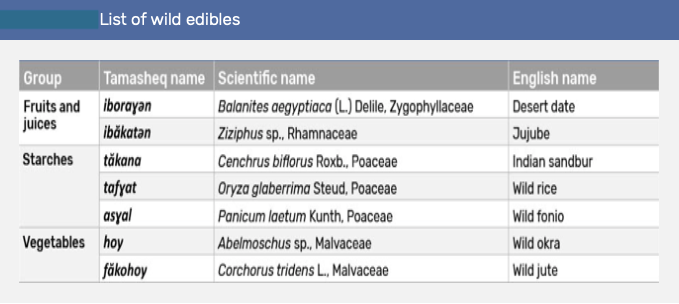
Gathering grass and other ad hoc wild foods takes place during and after the rainy season and is the sole responsibility of women and girls. Gathering is primarily centred on perennials, namely, wild grasses such as wild fonio and Indian sandbur. Wild jute is also collected for its leaves, as well as jujube, desert dates and wild rice. Indian sandbur is collected on the dunes using manual reaping, as is wild rice around ponds. Jujube and desert dates are hand-picked by shaking the trees or by using a wooden accessory, such as a stick, to make the fruit fall. Generally, jujube trees are near ponds. With regard to processing, Indian sandbur and wild fonio are ground prior to use. Community members prepare ăšăboraɣ, juice out of dates. Ahufăr (jujube bread), chewed or sucked, helps prevent ripe seeds from going off should they be kept for a longer period. Soaked desert dates produce a juice used as a laxative.
(Source of the article and data: Indigenous Peoples’ food systems: Insights on sustainability and resilience from the front line of climate change (Published by the Food and Agriculture Organization of the United Nations)
– global bihari bureau


